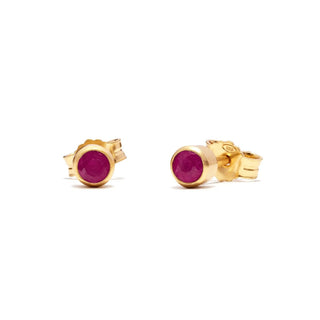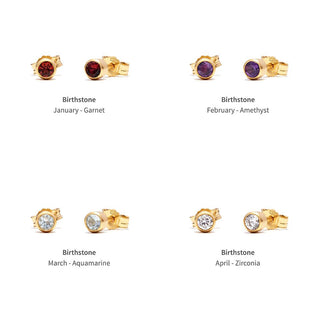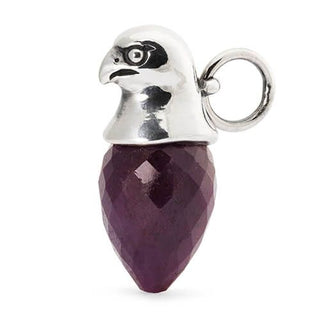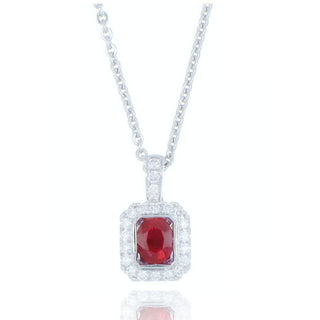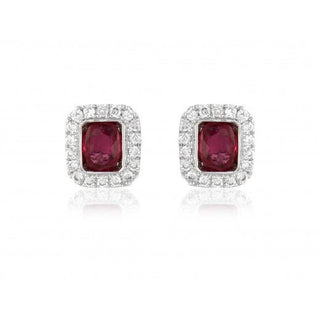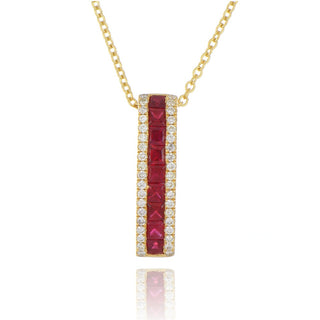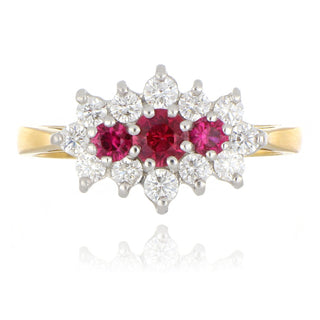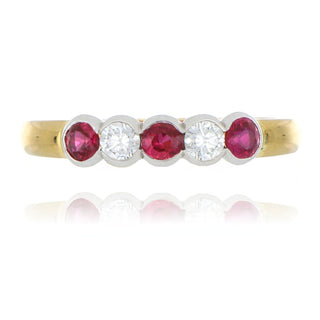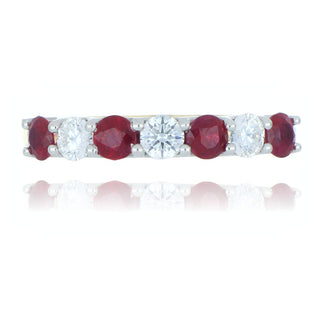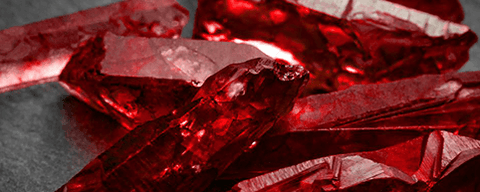
The name ruby comes from the term ‘ruber’, the Latin word for red. The colour can actually vary from a vibrant pink to a rich blood red but, whether it’s closer to a blush or a scarlet sunset, the ruby remains one of the most instantly recognisable and well-known gemstones. Ruby jewellery can be perfect for all sorts of different occasions but can be particularly well-suited for summer birthdays as it’s widely recognised as the July birthstone. A ruby ring or ruby necklace can also make the perfect anniversary gift, especially for those celebrating their 15th or 40th milestones.
Here’s everything you need to know about this beautiful and culturally significant gemstone…
The physical composition of ruby
A mainstay of July birthstone jewellery, the ruby is a type of the mineral corundum, a crystalline form of aluminium oxide. This naturally translucent material can take different forms but it can notably form two types of cardinal gem – ruby and sapphire. The colours of these gemstones are affected by the presence of certain ‘transition metals’ in the crystalline structure. The distinctive red of a ruby is produced by the presence of chromium. Other forms of corundum gemstone are known as sapphires, so colour really is key in defining a ruby.
Colour and hardness
Like other primary gemstones, rubies are generally graded according to ‘the four Cs’ - colour, cut, clarity and carat weight. Colour is incredibly important here and can be divided into a further three components: hue, saturation and tone. As already mentioned, rubies can span a range of colours at the end of the spectrum, with secondary hues including orange, purple, violet and pink. The most precious rubies are generally held to be those with a full, rich red colour. These can sometimes have a subtle hint of blue tones. Rubies can sometimes present a three-rayed, six-pointed star known as an asterism when held up to the light. This phenomenon is produced by light reflecting from the gemstone’s natural rutile ‘needles’, which are aligned along the crystal’s facets.
Rubies are also incredibly hard. The Mohs scale of mineral hardness is a way of measuring the ability of one harder material to scratch another, softer one. It is commonly used in identifying gemstones and goes from one to ten. You’re probably aware that diamond is one of the hardest naturally occurring materials in the world. Diamond and black diamond (an impure form also known as carbanado) is the only mineral to achieve a ten on the Mohs scale but ruby is not far behind.
Ruby (and the closely related sapphire) are rated at nine on the scale. There are other harder minerals but it is second only to diamond when it comes to cardinal gemstones.
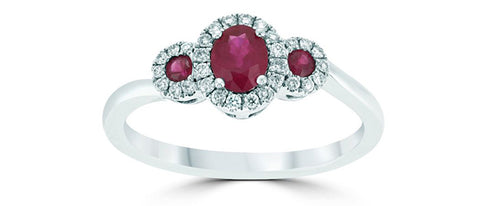
History and symbolism
Cardinal gems are the gemstones that have traditionally been considered the most valuable in a number of different cultures around the world. The list and definition can change across different periods and locations but generally includes red rubies, blue sapphires, green emeralds and white diamonds. Purple amethyst was also incredibly precious in the Old World until huge deposits discovered in South America lowered its rarity value.
Rubies have a rich history and have been given different symbolic meanings in different cultures. Many cultures have considered rubies to be the stone of kings, rich with passion and protection. The blood-like property has seen the ruby linked to strength and the ancient Burmese regarded it as the stone of warriors. In China, they have been worn to grant protection and their links to love and passion have often seen rubies feature in marriage and weddings.
Rubies have been mined in Myanmar since 600AD and the country continues to be a major producer. They are also mined in Vietnam, Thailand, India, East Africa and some parts of the Middle East. As well as the four Cs criteria, rubies can also be valued based on their point of origin.
The ruby birthstone and anniversaries
Ruby is commonly held to be the birthstone for July, so the July birthstone meaning can be linked to the various symbolic properties already mentioned. Rubies are frequently associated with protection, passion and love but the red of a ruby can also have more modern connotations, whether it’s summer heat or the red of July fireworks in the US. July birthstone history can be a little complicated. In some cultures, birthstones are connected to celestial bodies rather than calendar months and must be worked out astrologically. In terms of the Zodiac, rubies are often linked with Capricorn (for birthdays between 22 December and 20 January).
Rubies are not only perfect for July birthstone jewellery; they are also ideal for anniversaries. The 40th wedding anniversary is traditionally the classic ‘Ruby Wedding’, but the 15th is also associated with crystal, making ruby jewellery a perfect choice.
At Allum & Sidaway we have a selection of ruby birthstone jewellery . Visit one of our stores or purchase from our beautiful range of ruby rings and ruby necklaces on our online store.
